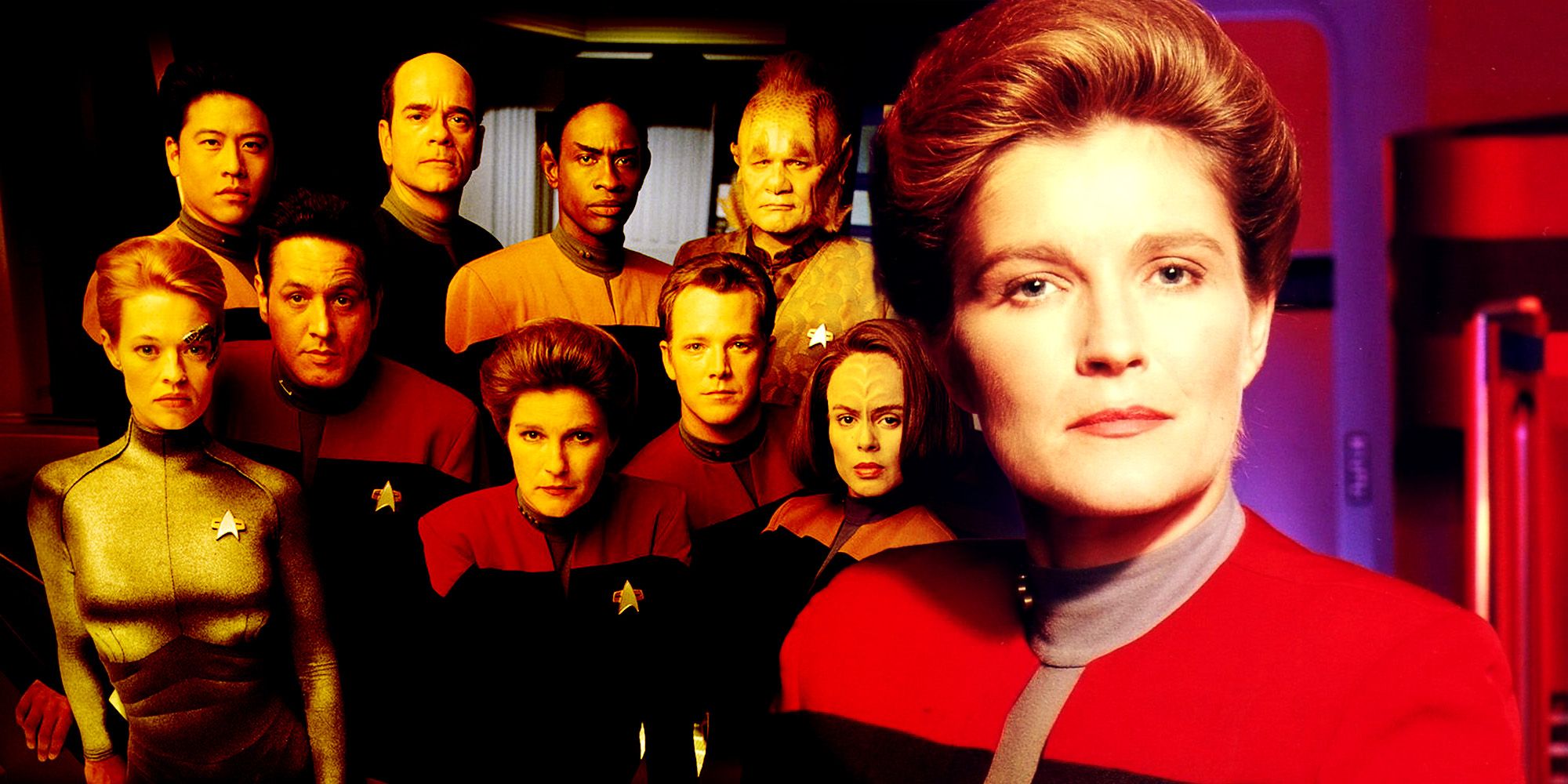
The Mistake That Spelled Death for Star Trek: Voyager

The big mistake that spelled death for Star Trek: Voyager and how it impacted the show's narrative.
The Promise of Conflict
Star Trek: Voyager, a promising show set in the Delta Quadrant, failed to fulfill its potential conflict between the Starfleet crew and the Maquis members, as revealed by writer Ronald D. Moore. The clash between the two factions, with Starfleet officers and former Maquis resistance fighters stranded together, was intended to be a central theme of the show. However, this concept faded from the scripts fairly early on, leading to a missed opportunity for compelling storytelling and character development.
deltaquadrant_changesto_voyager-1
Ronald D. Moore, in The Fifty-Year Mission: The Next 25 Years, explicates the ideological differences between Starfleet and the Maquis and how they should have provided more fuel for Voyager's narrative. He points out that a particular costuming choice, where the Maquis put on Starfleet uniforms at the end of the pilot episode, was the show's biggest mistake. This decision, according to Moore, reduced the potential for conflict and tension between the two groups, ultimately leading to a missed opportunity for engaging storytelling.
A composite image of the crew of Voyager in front of the ship in Star Trek
The Redemption of Conflict
It was not until Star Trek: Voyager season 4 that the show rose from the metaphorical dead, thanks to the introduction of ex-Borg Seven of Nine. This character fulfilled the promise of conflict between Starfleet and an opposing perspective, bringing back the tension that was lacking in the earlier seasons. Seven of Nine's introduction provided a platform for Janeway's values to be defined through ongoing opposition, as she faced the challenge of advocating for individualism against Seven's allegiance to the Borg Collective.
Star Trek Voyager Seven of Nine Jeri Ryan
In costuming Seven of Nine, Star Trek: Voyager made a conscious decision to avoid the mistake that had plagued the Maquis crew members. By dressing Seven of Nine in conspicuous civilian clothing, the show set her apart from the uniformed Starfleet crew, visually marking her as someone with differing values and perspectives. This deliberate costuming choice also served to highlight the early mistake made with the Maquis crew, who seemingly abandoned their roots the moment they adopted Starfleet uniforms, as pointed out by Ronald D. Moore.
In Voyager's sickbay, Janeway regards Seven of Nine with a kind look.
The Impact and Legacy
The impact of the costuming choices on the narrative of Star Trek: Voyager is evident, as it shaped the dynamics between the characters and the development of conflict. Ronald D. Moore's insights shed light on the missed opportunities and the eventual redemption of conflict in the show. The portrayal of conflict between opposing ideologies and values added depth and complexity to the storytelling, providing viewers with a richer and more engaging narrative.
The Star Trek: Voyager Cast in season 6.
Star Trek: Voyager, despite its early missteps, remains a significant part of the Star Trek franchise. The show's journey through the Delta Quadrant, the characters' evolution, and the exploration of conflicting values continue to resonate with fans. The redemption of conflict through the introduction of Seven of Nine stands as a testament to the show's ability to evolve and deliver compelling storytelling, making it a noteworthy chapter in the Star Trek legacy.


















